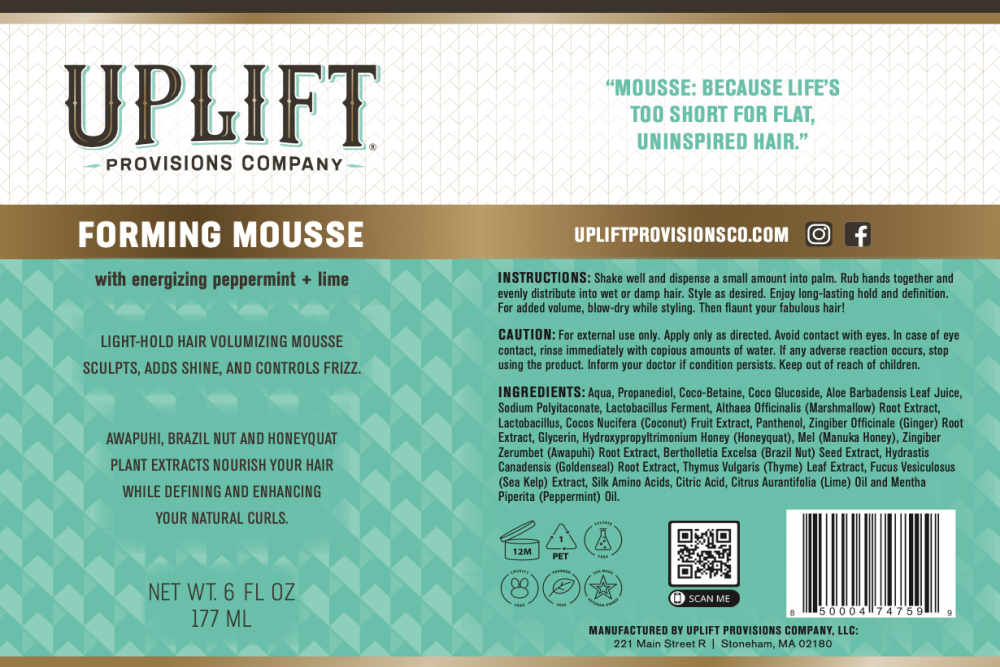
Hair Products 101: Understanding Ingredients and Labels
Choosing the right hair products can be a daunting task with the multitude of options available in the market. Walking down the haircare aisle, you're greeted with an array of shampoos, conditioners, styling products, and treatments, each claiming to be the solution to your hair woes. To make an informed decision and achieve the best results for your hair, it's crucial to understand the ingredients and labels on these products. In this blog post, we'll delve into the world of hair product ingredients, decoding labels, and empowering you with the knowledge to select products that cater to your specific hair needs.
The Importance of Reading Labels
Before we dive into the nitty-gritty of hair product ingredients, let's first emphasize the significance of reading labels. The label on a hair product provides essential information about its contents, purpose, and application. By carefully examining the label, you can make informed decisions, avoid potential allergens, and select products tailored to your hair type and concerns. Here are some key elements to look for when reading hair product labels:
-
Product Name and Brand: The name and brand of the product are typically displayed prominently on the label. This information helps you identify the product quickly.
-
Purpose: The label should clearly state the product's intended purpose, whether it's a shampoo, conditioner, serum, or styling product. This ensures you're choosing the right product for your needs.
-
Instructions: Instructions for proper use and application are crucial for achieving the desired results and avoiding misuse.
-
Ingredients: This is where the real magic happens. The ingredients list provides a comprehensive breakdown of what the product contains. Understanding these ingredients is key to making an informed choice.
Understanding Ingredients
Now, let's delve into the world of hair product ingredients. Ingredients are listed in descending order of concentration, with the most abundant ingredients appearing at the beginning of the list. Here are some common ingredients you might encounter and what they do:
-
Water (Aqua): Water is usually the primary ingredient in many hair products, especially shampoos and conditioners. It serves as a solvent and a carrier for other ingredients.
-
Surfactants: Surfactants, such as sodium lauryl sulfate or sodium laureth sulfate, are responsible for creating lather and cleansing the hair by removing dirt and oil.
-
Emollients: Emollients like oils and butters are added to condition and moisturize the hair, making it softer and more manageable.
-
Proteins: Ingredients like keratin, silk amino acids, and soy protein help strengthen and repair damaged hair by replenishing protein lost during styling and exposure to environmental factors.
-
Humectants: Humectants like glycerin and propylene glycol attract and retain moisture in the hair, preventing dryness and frizz.
-
Silicones: Silicones, such as dimethicone and cyclomethicone, create a protective barrier around the hair shaft, providing shine and reducing frizz. However, they can also lead to product buildup if not properly removed.
-
Preservatives: Preservatives like parabens and phenoxyethanol are added to extend the shelf life of products and prevent the growth of harmful microorganisms.
-
Fragrance: Fragrances are used to enhance the product's scent and can be a combination of natural and synthetic compounds. Some individuals may be sensitive to certain fragrances.
-
Colorants: Colorants are added to hair products to give them a specific hue, especially in shampoos and conditioners designed for color-treated hair.
-
Active Ingredients: Some products, such as treatments and serums, contain active ingredients like vitamins, botanical extracts, or specialized compounds designed to address specific hair concerns, such as hair loss or dandruff.
Decoding Labels for Your Hair Type
Understanding your hair type and specific needs is crucial when deciphering hair product labels. Here's a breakdown of what to look for based on different hair types:
-
Fine Hair: If you have fine hair, look for products labeled as volumizing, lightweight, or designed to add body. Avoid heavy, oil-based products that can weigh down your hair.
-
Thick or Coarse Hair: For thick or coarse hair, seek products labeled as moisturizing, smoothing, or hydrating. Ingredients like shea butter and argan oil can work wonders.
-
Curly or Wavy Hair: Curly and wavy hair benefits from products that define curls and reduce frizz. Look for labels mentioning curl-enhancing, anti-frizz, or curl-defining properties.
-
Color-Treated Hair: If you've colored your hair, opt for products labeled as color-safe or formulated for color-treated hair. These products help maintain your color while providing necessary care.
-
Damaged Hair: For damaged hair, look for products with ingredients like keratin, biotin, or amino acids that promote repair and strength. Labels mentioning "repair," "strengthening," or "damage control" are your best bet.
Conclusion
In the world of hair products, understanding ingredients and labels is your ticket to achieving healthy, beautiful hair. By reading labels carefully and knowing what each ingredient does, you can select products that cater to your unique hair type and concerns. Remember that everyone's hair is different, so what works for one person may not work for another. Experimentation may be necessary to find the perfect products that leave your hair looking and feeling its best. Armed with this knowledge, you're ready to navigate the haircare aisle with confidence and make informed choices for your hair's well-being.
Uplift Provisions Company is a hair styling + Personal Care brand that understands the importance of clean ingredients.
